search costs
description: the time, effort, and resources expended by consumers or firms to discover and evaluate products, services, or information.
61 results
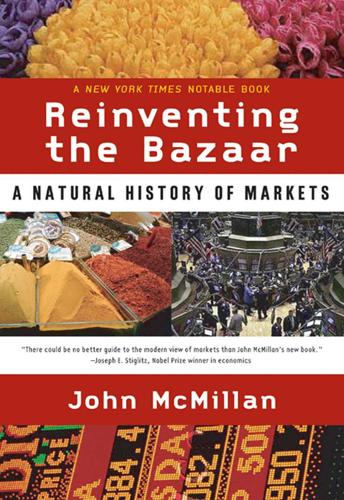
Reinventing the Bazaar: A Natural History of Markets
by
John McMillan
Published 1 Jan 2002
Sellers intending to continue doing business over the long run might refrain from price-gouging in order to earn repeat business from their customers. Advertising and loss leaders may dislodge customers from rival stores. Brand names and trademarks can reduce search costs for consumers. Market intermediaries like wholesalers and trading companies reduce search costs for firms. There is a long list of market devices that aid the acquisition of information and mitigate the anticompetitive effects of the costs of search. Search costs bring entrepreneurial opportunities. Even small search costs, as we have seen, can give rise to overpricing unless there is some additional force to counter their effects. Search being a wasteful activity, buyers might be willing to pay for a service that conducts the search for them.
…
In addition, transactions sometimes occur between the wrong people, or fail to occur at all. If search costs are high, shoppers will not search very far or might even give up looking. The difficulty of locating alternative sellers might mean you purchase from the seller you know, though there might be other sellers who would offer you a better deal or a different product that better fits your needs. Search costs can result in inappropriate matches of buyer and seller, sometimes preventing mutually beneficial transactions from being made. And search costs, as we saw, actually weaken the force of competition. The mere existence of choice does not in itself ensure that the market operates competitively.
…
The shopper values the assurance against being cheated that the relationship provides, and the merchant wants to leave the shopper satisfied enough to return tomorrow. The relationships economize on search costs and result in prices being lower for repeat customers. Repeat-business relationships are only a partial solution to informational problems. A sophisticated market needs additional mechanisms for providing information. Most markets contain devices designed to overcome the frictions generated by search costs and thereby allow competitive forces to drive prices down. Services like Consumer Reports and the Yellow Pages lower search costs. Word of mouth is a handy source of shopping tips. Sellers intending to continue doing business over the long run might refrain from price-gouging in order to earn repeat business from their customers.
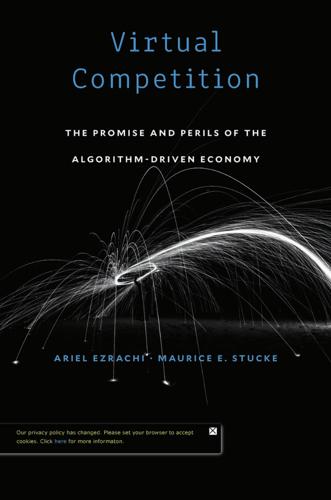
Virtual Competition
by
Ariel Ezrachi
and
Maurice E. Stucke
Published 30 Nov 2016
The Promise of a Better Competitive Environment 5 Lower Search Costs Having more information and greater market transparency is not especially helpful if it takes too much time and effort for consumers to review the information. New York City has over 5,000 grocery stores.11 Grocery stores are often transparent in their prices. But consumers don’t have the time to travel around town to compare prices for each grocery item. Thus another procompetitive feature of online markets is their ability to reduce users’ search costs. The economic literature has long illustrated that increases in search costs will likely lead to increases in the seller’s power and prices.12 Ill-informed customers are more likely to be subjected to higher, even monopolistic, pricing.
…
When the seller’s market power is based on the presence of high search costs related to quality or price, reducing those costs should, in theory, decrease the seller’s market power and prices.13 Online platforms can help reduce search costs for both sellers and buyers by facilitating information flow and enabling users to quickly compare a range of products and relevant prices.14 The promise of online platforms, including PCWs, in promoting competition lies not only in their provision of price information, but in several other features that support customers’ decision making and reduce their search costs. For example, online shopping platforms provide users with interactive tools to identify the products or ser vices that match their preferences.
…
Price comparison websites (PCW), which benefit from economies of scale and high conversion rates, can further lower these advertising costs and facilitate access to markets.22 Indeed, it has been reported that consumers indicated that “they would only know to contact a few companies for any given product or ser vice, but on [PCWs] they get a wider range of options to choose from.”23 More Dynamic Disruption and Efficiencies Reducing search costs, lowering entry barriers, and increasing information flows can increase the competitive pressure to innovate.24 Thus the fourth promise of online markets is to promote distinct dynamic and allocative efficiencies. The disruptive technology—by increasing transparency and reducing search costs—can more efficiently match buyers and sellers, thereby promoting allocative efficiency. With these online tools, users can quickly identify the provider or product that better matches their needs.25 As the U.K.
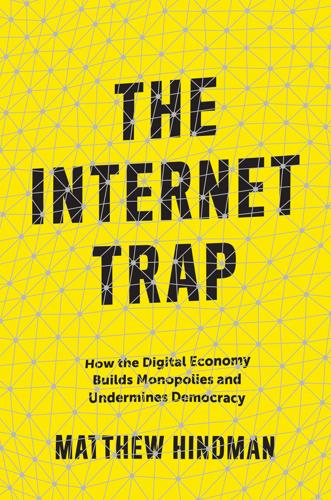
The Internet Trap: How the Digital Economy Builds Monopolies and Undermines Democracy
by
Matthew Hindman
Published 24 Sep 2018
How often do they try out new brands of deodorant or toothpaste? How many consumers are really getting the lowest possible rate on their mortgage, or the highest interest rate on their savings account? Most of the time firms and individuals stick with products and services that are known to be good enough. Search costs, then, can also produce lock-in. And these search costs will be the subject of the next chapter. 3 The Political Economy of Personalization It’s becoming quite apparent to us that the world of playing the perfect music to people and the world of playing perfect advertising to them are strikingly similar. —Eric Bieschke, chief scientist at Pandora In his 1995 book Being Digital, Nicholas Negroponte described a world in which everyone had a virtual newspaper entirely tailored to his or her personal taste.
…
A couple shopping for a car are far more likely to save money after checking a second or third auto dealership than they are from checking prices at the ninety-ninth or the hundredth. Stigler argued that diverse and geographically big markets have especially high search costs. How does one lower the costs of search? One answer is to localize markets, as has happened for thousands of years as merchants clustered in bazaars or town squares or shopping districts. Advertising is a slightly more recent attempt to lower search costs. Classified advertising in particular provides a mediated marketplace where buyers and sellers can meet. Another solution, as Stigler explained, involves the creation of market makers: “specialized traders whose chief service . . . is implicitly to provide a meeting place for potential buyers and sellers.”11 He suggested that such firms can take a variety of forms, from large used car dealers to trade journals to specialized information brokers.
…
Site design and mobile app design are distribution costs, since clunky interfaces stunt audience growth. Fresh content is a distribution cost, since few readers want to read the same piece twice. 168 • Chapter 8 Distribution costs also include search costs, which are spread across digital giants, smaller publishers, and users alike. Google and Facebook pay by filtering through billions of items to find those most likely to satisfy users. Publishers pay search costs, too, by optimizing their content for visibility in search engines and social sites, or simply by buying advertising. Buzzfeed and the Huffington Post pay millions of dollars to ensure that Facebook features their stories—money that goes to everything from site design to content management platforms, testing infrastructure to writers’ salaries.
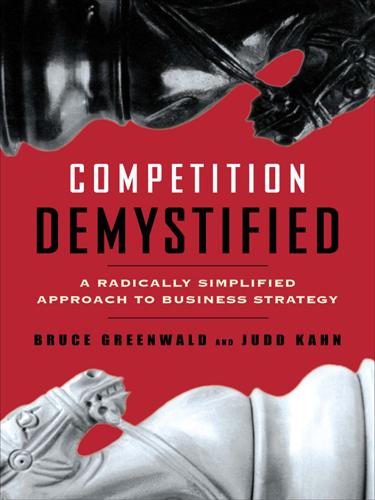
Competition Demystified
by
Bruce C. Greenwald
Published 31 Aug 2016
Costs of switching were reduced or eliminated, and competition in the industry intensified. SEARCH COSTS Customers are also tied to their existing suppliers when it is costly to locate an acceptable replacement. If the need is a new refrigerator, the search costs are minimal; information and ratings on competitive products are easily available. But for many people, finding a new doctor involves more than looking in the yellow pages or even in a health-care network directory. There is no ready source of the kind of information a prospective patient wants, and given the personal nature of the relationship, no alternative to direct experience. High search costs are an issue when products or services are complicated, customized, and crucial.
…
For businesses, the more specialized and customized the product or service, the higher the search cost for a replacement. Professional services, which also may involve an intense level of personal contact, fit into this category, as do complicated manufacturing and warehousing systems. It is easier to upgrade with a current vendor or continue with a law firm even when not totally satisfied, because finding a better one is costly and risky. To avoid the danger of being locked in to a single source, many firms develop relationships with multiple suppliers, including professional service providers. Taken together, habits, switching costs, and search costs create competitive advantages on the demand side that are more common and generally more robust than advantages stemming from the supply or cost side.
…
As banks move beyond simple check processing and ATM withdrawals to automatic bill payment, preestablished access to lines of credit, direct salary deposit, and other routine functions, customers become more reluctant to leave for another bank, even if it offers superior terms on some products. The same tactic of providing more integration of multiple features raises search costs. Comparison shopping is more difficult if the alternatives are equally complicated but not exactly comparable. Few people spend their leisure time analyzing the pricing and service plans of wireless telephone companies. Also, as the importance and added value of products and services increases, so does the risk of getting a poor outcome from an alternative provider.

Blockchain Revolution: How the Technology Behind Bitcoin Is Changing Money, Business, and the World
by
Don Tapscott
and
Alex Tapscott
Published 9 May 2016
He posited that a firm would expand until the cost of performing a transaction inside the firm exceeded the cost of performing the transaction outside the firm.5 Don argued that the Internet would reduce a firm’s internal transaction costs somewhat; but we thought, because of its global accessibility, it would reduce costs in the overall economy even more, in turn lowering barriers to entry for more people. Yes, it did drop search costs, through browsers and the World Wide Web. It also dropped coordination costs through e-mail, data processing applications like ERP, social networks, and cloud computing. Many companies benefited from outsourcing such units as customer service and accounting. Marketers engaged customers directly, even turning consumers into producers (prosumers).
…
By giving away their source code for free, sharing power with everyone on the network, using consensus mechanisms to ensure integrity, and conducting their business openly on the blockchain, they are magnets of hope for the many disillusioned and disenfranchised. As such, blockchain technology offers a credible and effective means not only of cutting out intermediaries, but also of radically lowering transaction costs, turning firms into networks, distributing economic power, and enabling both wealth creation and a more prosperous future. 1. Search Costs—How Do We Find New Talent and New Customers? How do we find the people and information we need? How do we determine if their services, goods, and capabilities are best for us as we seek to bring the tonic of the market to bear on our internal operations? Although the architecture of the firm is basically intact, the first era of the Internet dropped such costs significantly and enabled important changes.
…
The results of these queries won’t be résumés, advertising links, or other pushed content; they’ll be transaction histories, proven track records of individuals and enterprises, ranked perhaps by reputation score. Get the picture? Said Vitalik Buterin, founder of the Ethereum blockchain, “Blockchains will drop search costs, causing a kind of decomposition that allows you to have markets of entities that are horizontally segregated and vertically segregated. That never really existed before. Instead you had kind of monoliths that do everything.”12 Several companies are working on search engines for blockchains, given the potential bonanza.
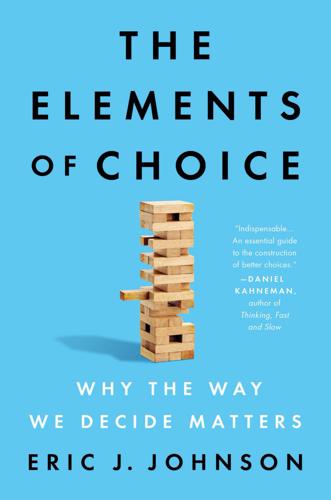
The Elements of Choice: Why the Way We Decide Matters
by
Eric J. Johnson
Published 12 Oct 2021
See Bartels, “How Eye Tracking Can Unlock Consumer Insights”; Chandon, Hutchinson, and Bradlow, “Does In-Store Marketing Work? Effects of the Number and Position of Shelf Facings on Brand Attention and Evaluation at the Point of Purchase.” 12. Lynch and Ariely, “Wine Online: Search Costs Affect Competition on Price, Quality, and Distribution”; Diehl, “When Two Rights Make a Wrong: Searching Too Much in Ordered Environments”; Diehl, Kornish, and Lynch, “Smart Agents: When Lower Search Costs for Quality Information Increase Price Sensitivity.” 13. Details are in Glazerman, “The Choice Architecture of School Choice Websites.” 14. Steve Miller, who teaches a menu-design seminar and is president of the Miller Resource Group, in Grafton, Massachusetts, quoted in Panitz, “Does Your Menu Attract or Repel Diners?”
…
She used statistical models to see how this effect of order translated to cost. These models controlled for differences in hotels (such as distance from downtown, swimming pools, room quality, chain name, and the like), allowing her to look at whether people should search more and how much it cost them to search too little. She argues that people behave as if search costs are huge, even if it involves just one click. Customers could save money by searching more options. Ursu calculated, on average, that consumers give up about $2 by not clicking on another hotel, an act that would take only a few seconds. Let’s look at this as an economist: if I could make $2 for, say, one minute more of work, by not searching I am turning down an opportunity to make $2 a minute— $120 an hour.
…
BBC News, February 25, 2017. https://www.bbc.com/news/magazine-39082465. Diehl, Kristin. “When Two Rights Make a Wrong: Searching Too Much in Ordered Environments.” Journal of Marketing Research 42, no. 3 (2005): 313–22. doi:10.1509/jmkr.2005.42.3.313. Diehl, Kristin, Laura J. Kornish, and John G. Lynch. “Smart Agents: When Lower Search Costs for Quality Information Increase Price Sensitivity.” Journal of Consumer Research 30, no. 1 (June 1, 2003): 56–71. doi:10.1086/374698. Dinner, Isaac, Eric J. Johnson, Daniel G. Goldstein, and Kaiya Liu. “Partitioning Default Effects: Why People Choose Not to Choose.” Journal of Experimental Psychology: Applied 17, no. 4 (December 2011): 332–41. doi:10.1037/a0024354.
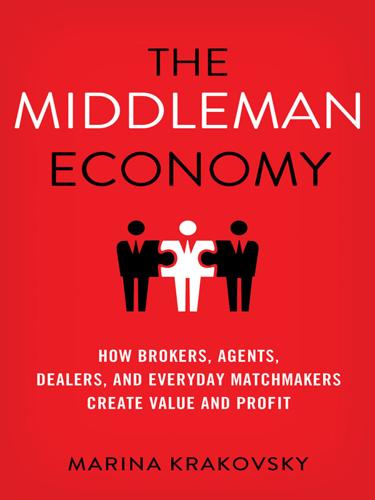
The Middleman Economy: How Brokers, Agents, Dealers, and Everyday Matchmakers Create Value and Profit
by
Marina Krakovsky
Published 14 Sep 2015
“We can be out for weeks at a time and come back with next to nothing in our van, or we can make one unplanned stop on some back road we take out of sheer curiosity and find a huge honey hole,” they write, using picker slang for a stop full of rusty gold that its owners are willing to part with.3 He’s making a point about unpredictability, but his comment also says something about search costs. Imagine driving for days, buying gallons of gas, without scoring a single buy. The search costs in the picking business are tremendous, of which travel expenses alone can eat away any profit. Until his TV show brought fame and fortune, Wolfe would sleep in his car to stay within his budget, and you can be sure that car was nothing like the shiny Benz you see on his show.
…
But for now let’s focus on the value Wolfe provides to his clients; it’s important to appreciate because it is much the same value so many other middlemen provide in other industries. A large part of what makes him valuable to the dealers and collectors who buy from him is precisely his willingness to go far and wide—to bear those search costs. Sure, Wolfe skips the middleman, just as he says—but he’s a middleman every bit as much as the dealers who buy from him are. Think about it: if an antiques dealer bought directly from a guy with an old barn, instead of from Wolfe, the dealer would say he’s skipping the middleman, too. But the antiques dealers want the middleman—they value the picker—because any markup they pay to him is worth the price to them.
…
If you’re a specialist, you know all the kinds of questions to ask. If you’re a generalist you don’t know what these résumés mean.” That kind of expertise translates not only into a higher success rate in filling jobs, which means a higher rate of getting paid and getting hired again, but also in lower search costs, since Robboy can scout and screen candidates much more quickly than if he were recruiting outside his niche. That’s why he turns down jobs outside that niche, even if he could fill the job eventually: “It would take me ten times as long to fill the job—it’s a waste of time.” Time is money for everyone, of course, but the savvy and busy Certifier understands opportunity costs especially well.
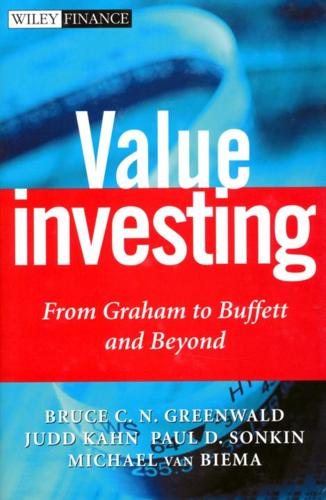
Value Investing: From Graham to Buffett and Beyond
by
Bruce C. N. Greenwald
,
Judd Kahn
,
Paul D. Sonkin
and
Michael van Biema
Published 26 Jan 2004
Practically the only way the entrant can make any inroads is by offering to write the insurance at premiums substantially lower than those the incumbents are charging. But as this is almost always a losing proposition, entry in situations like this stops before the high profit levels of the incumbents are completely eliminated. In the model we have proposed here, the high search cost limits the arrival of new entrants, and the gap between the asset values and the earnings power values of the incumbents does not disappear. High switching costs are the third and probably most common source of customer captivity. If it costs money, time, and effort for a customer to switch from one supplier to another, incumbents have an advantage over entrants.
…
Firms with captive customers should work to enhance their ties in the following ways: • By raising switching costs through adding features and services to the original offering, which has been a Microsoft strategy; • By reinforcing habits through increasing frequency of purchases due to obsolescence or with leasing plans for automobiles; • By raising search costs through extending and complicating the offered range of services and enhancing existing customer satisfaction.z At the same time, companies benefiting from these competitive advantages should exploit them with aggressive pricing strategies and raise prices whenever they can. Those that do not capitalize on their protected positions may be concealing substantial value in unused pricing power.
…
The brand may be an essential element of the perceived value of the product. But by itself the brand does not construct barriers to entry, establish competitive advantages, or create a franchise. The aspects of consumer behavior that do create franchise value are those we have described in this chapter-habit, search costs, and switching costs-as leading to customer captivity. These may be encompassed by some definitions of brand behavior, but these definitions are so broad that they cannot compete with an examination of the direct sources of captivity. Also, the value of brands is greatly enhanced by the presence of economies of scale.
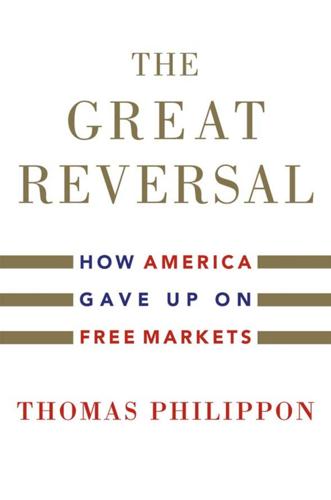
The Great Reversal: How America Gave Up on Free Markets
by
Thomas Philippon
Published 29 Oct 2019
The answer is: the same firms as today. The conclusions we draw from Figures 3.2 and 3.3 are not consistent with what most people think of as competition. If we go back to our six hypotheses, we can say that Figures 3.2 and 3.3 rule out lower search costs as an explanation because this hypothesis predicts the opposite pattern. Under the Lower Search Costs hypothesis, small changes in productivity or innovation lead to large swings in market shares. Instead we see increased persistence and stability of market shares. FIGURE 3.2 Turnover at the top. See text for details. Figures 3.2 and 3.3 are consistent with decreasing domestic competition.
…
There could be other hypotheses, but I think they would boil down to a combination of these five. The Rise of Superstar Firms hypothesis is the story of Walmart in the 1990s, which is discussed in Chapter 2. According to this view, concentration is good news and should be linked to faster productivity growth. The hypothesis of Lower Search Costs is related to the superstar firms hypothesis, but it is conceptually distinct. It argues that consumers have become more price-elastic thanks to online shopping tools. Notice that this hypothesis implies that ex post competition has increased and that profit margins (earnings over sales) have decreased.
…
See also Amazon; Apple; Facebook; Google; Microsoft internet service: US price indexes for, 1–2; costs in US versus Europe, 5–6; and competition’s impact on service quality, 19; deregulation of, 140 investment, 62; as low relative to profits, 63–65; purpose and goals of, 65–69; assessing value of, 67; fundamental law of, 68; intangible, 72–75; tangible, 73; weak, 79 investment gap, 69–72, 75 iPhones, 242–243 Issue One, 198 Italy, campaign finance contributions in, 199 Jacobs, Jeff, 281–282 Janofsky, Adam, 277 Jarmin, Ron, 81 Jayachandran, Seema, 191 Jeffords, James, 191–192 Jobs, Steve, 294 Jolly, David, 176 Jones, Chad, 42, 78 Jones, Doug, 198 Jovanovic, Boyan, x Kalanick, Travis, 267 Kang, Karam, 157 Kapner, Suzanne, 34 Katz, Lawrence, 48, 50 Kendall, Frank, 288 Keynes, John Maynard, viii Keynes, Soumaya, 92 Khan, Lina M., 43 “killer acquisitions,” 82 Kim, Hyunseob, 281 Kimball, David C., 157 Klein, Joel, 45 Kleiner, Morris M., 283 Knight, Brian, 199 Kroszner, Randall S., 191 Krueger, Alan B., 282, 283 Krugman, Paul, 290–291 Kwoka, John, 87, 91 labor market competition, 23 labor productivity, 120–121 labor share(s): evolution of, 106–109; for market economy in US and euro area, 109 labor turnover, xi–xii La Ferrara, Eliana, 199 Lampedusa, Giuseppe Tomasi di, 287 La Pira, Timothy M., 163 La Porta, Rafael, 127 Larkin, Yelena, 47, 54–56 law of one price (LOOP), 111–112 leadership PACs, 184 League of Nations, 129 Leech, Beth L., 157, 163 Leucht, B., 133 licensing, occupational, 282–283 Lieber, Ethan, 236 life expectancy, 224, 229 Liljenquist, Dan, 198 Lisbon Strategy, 136–137 lobbying, 153–155; impact of, 9, 174–175; against competition, 23–24; and future of Europe’s free markets, 148–149; as democratic right, 155; challenges of measuring impact of, 156–157; and endogeneity bias, 157–160; benign view versus negative view of, 160; inefficiencies created by, 160–161; connections as key to success in, 161–163; fiscal targets of, 163; empirical regularities about, 164–166; in Europe versus US, 164–166; skewness of, 166–170; effectiveness of, 170–174; intensity, 171; and campaign finance contributions, 189; in finance, 220–222; in health care, 234, 235; by internet giants, 260–262 LOOP (law of one price), 111–112 Lopez-de-Silanes, Florencio, 127 loss leader pricing, 43 Lower Search Costs hypothesis, 49–50, 52 Lucca, David, 200 luxury goods, 113 Lyon, Spencer G., 22 Ma, Song, 82 MacMillan, Douglas, 271 macroeconomic equilibrium, 292 Mahoney, Christine, 173 manufacturing, rise in concentration in, 46 marginal cost, 118 Marinescu, Ioana, 280 Marino, Tom, 235 market power: and assessing competition, 25; versus demand elasticity, 26; and welfare, 27–30; concentration and rise in, 45–48; concentration hypotheses and rise in, 48–51; persistence of market shares over time and rise in, 51–53; profits of US firms and rise in, 51–53; profit margins and payouts and rise in, 54–58; China shock and rise in, 58–60; versus efficiency in merger regulation, 88–90 market share: of Walmart, 32; persistence of, over time, 51–53.
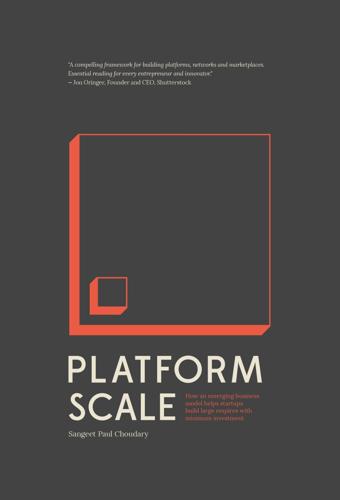
Platform Scale: How an Emerging Business Model Helps Startups Build Large Empires With Minimum Investment
by
Sangeet Paul Choudary
Published 14 Sep 2015
On development platforms like Android, the infrastructure layer may be very dominant. On other platforms, like Instagram, the infrastructure layer may be thinner. The infrastructure layer provides the infrastructure on top of which value can be created. Large-scale value creation leads to the problem of abundance. With an abundance of production, search costs increase for consumers. Too many videos on YouTube may make it harder for consumers to find the best ones. To solve for this, platforms need a third layer: data. c. Data layer The final platform layer is the data layer. Every platform uses data in some way. Data allows the platform to match supply with demand.
…
A lot of value is created without anyone interested in consuming it. This, in turn, discourages further creation and destroys the activity on the platform. A platform that fails to encourage curation becomes loaded with poor-quality content and fails to stay useful and engaging. Finally, a platform that fails to encourage customization will increase search costs for the consumer. Consumers will find the experience irrelevant. This, in turn, may lead to a user exodus over time. When running a platform business, one must ensure that all four actions are repeatedly performed across all interactions. Failure to encourage any one of these actions may lead to failure of the entire interaction.
…
Platforms that abstract all non-core activities for producers and act as true plug-and-play infrastructures succeed in attracting more production activity. Overcoming the time/effort barrier may be equally useful for the consumer. Platforms achieve this through efficient aggregation and by lowering search costs for consumers. In the early days of the Web, Yahoo provided value as the home page of the Web. As the Web grew, and portal-based navigation grew more inefficient, Google’s pull-based search helped consumers navigate the Web. In recent times, a variety of content consumption tools, ranging from Flipboard to Pocket, have attacked different content consumption problems with the sole purpose of reducing the time or effort barriers involved in the act of consumption.

Understanding Sponsored Search: Core Elements of Keyword Advertising
by
Jim Jansen
Published 25 Jul 2011
Understanding the Potential Customers Intent 49 1 0.9 0.8 0.7 P(x) 0.6 0.5 0.4 0.3 0.2 0.1 0 1 2 3 4 5 6 7 8 9 10 Number of Results Clicked θ=.02 θ=.05 θ=.08 Figure 3.7.╇ Relationship of searcher, query, keyphrase, and result Searchers as potential consumers typically do not craft long queries, do not submit a lot of queries, and do not click on a lot of results. Therefore, they typically do not visit a lot of sites that are the landing pages of advertisements. Interestingly, economists at one time found this behavior extremely puzzling, as by common sense and empirical evaluation, the Web lowers search costs. Therefore, searching should increase as theoretically, there are no physical search or transportation costs for online searchers. However, online searchers are not exhibiting the lengthy search that economic theory would predict given the low physical costs of information search on the Web [60].
…
“Depth and Dynamics of Online Search Behavior.” Management Science, vol. 50(3), pp. 299–308. Diamond, P. A. 1989. “Search theory.” In The New Palgrave: Allocation, Information, and Markets, J. Eatwell, M. Milgate, and P. Newman, Eds. New York: Norton, pp. 271–286. Bakos, J. Y. 1997. “Reducing Buyer Search Costs: Implications for Electronic Marketplaces.” Management Science, vol. 43(12), pp. 1676–1692. Wessels, W. J. 1997. Microeconomics the Easy Way. Hauppauge, NY: Barron. Zipf, G. K. 1932. Selected Studies of the Principle of Relative Frequency in Language. Cambridge, MA: Harvard University Press. Newman, M. 2006.
…
“Consumer Memory for Television Advertising: A Field Study of Duration, Serial Position, and Competition Effects,” Journal of Consumer Research, vol. 23(4), pp. 263–277. [42] Terry, S. W. 2005. “Serial Position Effects in Recall of Television Commercials.” Journal of General Psychology, vol. 132(2), pp. 151–163. [43] Hoque, A. Y. and Lohse, G. L. 1999. “An Information Search Cost Perspective for Designing Interfaces for Electronic Commerce.” Journal of Marketing Research, vol. 36(3), pp. 387–394. [44] Ansari, A. and Mela, C. F. 2003 “E-customization.” Journal of Marketing Research, vol. 40(2), pp. 131–145. [45] Drèze, X. and Zufryden, F. 2004. “The Measurement of Online Visibility and Its Impact on Internet Traffic.”

Platform Revolution: How Networked Markets Are Transforming the Economy--And How to Make Them Work for You
by
Sangeet Paul Choudary
,
Marshall W. van Alstyne
and
Geoffrey G. Parker
Published 27 Mar 2016
Market aggregation provides information and power to platform users who formerly engaged in interactions in a haphazard fashion, often without access to reliable or up-to-date market data. Consider, for example, bus transportation in India. Different bus fleets operate on interstate, intrastate, and other routes. Many different types of bus exist, and pricing is extremely variable. Because the industry is so fragmented and unorganized, consumer search costs and decision overhead are high.13 Now a platform business called redBus is aggregating information from all Indian bus operators in a central plug-and-play infrastructure. The result is quicker, easier, and cheaper decision-making for consumers, and, in the long run, a healthier transportation market for India.
…
As the definition implies, matching quality is closely related to the effectiveness with which products or service offerings on the platform are curated. Users generally participate in a platform with highly interactional intent; they want to find what they’re looking for as quickly as possible. Precision in matching leads to lower search costs for users—that is, they need to invest less time, energy, effort, and other resources in finding the matches they want. Thus, if the platform does a great job of linking users to one another quickly and accurately, those users are likely to become active participants and long-term members of the platform; if matching quality is poor, slow, and disappointing, users will soon dwindle in number, interactions will slow to a trickle, and the platform may be doomed to an early demise.
…
Both are already undergoing disruption thanks to the rise of digital platforms, with millions of producers (artisans, craftspeople, writers) creating and marketing their own goods through platforms like Etsy, eBay, and Amazon. • Highly fragmented industries. Market aggregation through a platform increases efficiencies and reduces search costs for businesses and individuals looking for goods and services created by far-flung local producers. Platforms ranging from Yelp and OpenTable to Etsy, Uber, and Airbnb have made it easy for customers to visit a single source to gain access to thousands of small suppliers. • Industries characterized by extreme information asymmetries.
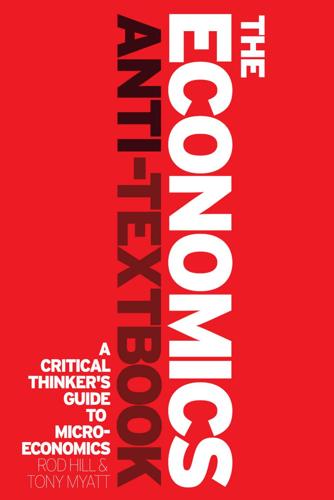
The Economics Anti-Textbook: A Critical Thinker's Guide to Microeconomics
by
Rod Hill
and
Anthony Myatt
Published 15 Mar 2010
The housing market has many non-competitive elements: apartments are heterogeneous and tastes idiosyncratic, which renders the market thin; search costs are substantial (as evidenced by agents’ fees), as are moving costs; and there is a lack of information about who’s a good landlord and who’s a good tenant. Are these merely details that can be ignored as irrelevant? Most housing economists believe that these are too important to be ignored in practice. Since the mid-1980s most of them have turned their attention to non-competitive models – models that emphasize search costs and the importance of contracts. Because of this different methodological perspective, they are much less 60 Question for your professor: Would rent controls necessarily cause shortages if the rental housing market were only imperfectly competitive?
…
Then any firm which charged half an epsilon more would lose no customers and thus would choose to increase its price. Similarly, it would pay all other firms to increase their prices. But at the higher price, it would again pay each to increase price, and so on until the price charged at every firm is the monopoly price, even though search costs are small. (Ibid.: 477) In the above quote, ‘epsilon’ stands for an arbitrarily small quantity. Just an epsilon of costs of acquiring information could lead otherwise competitive firms to charge the monopoly price. The point is that even slight departures from free, and hence perfect, information have large consequences.

Trading and Exchanges: Market Microstructure for Practitioners
by
Larry Harris
Published 2 Jan 2003
Investors use the markets to move money from the present to the future. Borrowers do the opposite. Hedgers trade to manage financial risks they face. Asset exchangers trade one asset for another they value more. Gamblers trade to entertain themselves. Exchanges and brokerages design markets to minimize the search costs of trading. They usually organize markets so that everyone who wants to trade gathers at the same place. A common gathering place helps traders find those traders who will offer the best prices. Exchanges and brokerages once organized their markets exclusively on physical trading floors. Now they can do so within computerized communications networks that allow buyers and sellers to arrange their trades remotely.
…
The structure of currency markets also ensures that dealers trade several times with each other for every trade that they make with a client. Real estate trades in brokered markets because every parcel is unique. The difficulties that buyers and sellers have finding each other make the real estate market the least liquid of the markets we have discussed. Electronic multiple listing services have lowered trader search costs, but these costs are still very high. Clearing and settlement in real estate markets is also quite expensive because the trades usually are large, complex, and among traders who do not have standing credit relationships. 3.4.2 Stock Markets Corporations apply to exchanges to list their stocks.
…
. ◀ * * * In many markets, passive traders commit to trade at prices that they post. These commitments increase the probability that an active trader will call upon them. Active traders prefer to call upon such traders because they are confident that they can arrange trades with them and thereby reduce their overall search costs. Problems that large traders encounter when they expose their orders often complicate their liquidity search strategies. Large traders generally do not like to show that they want to trade because they fear that front runners will trade ahead of them or that liquidity suppliers will retreat from before them.

Open for Business Harnessing the Power of Platform Ecosystems
by
Lauren Turner Claire
,
Laure Claire Reillier
and
Benoit Reillier
Published 14 Oct 2017
Charging only when a transaction occurs on the platform Transaction fee models have been used to encourage participants to join platforms as they are only charged when the participants receive some significant value from the platform (e.g. eBay charges transaction fees to sellers when items are sold). This approach works best when the platform seeks to offer a wide selection of ‘inventory’ with minimal friction. It may, however, increase ‘search costs’ for users if the platform is then inundated with lowquality listings. This search cost can be reduced through enhanced matching, searching and curation activities by the platform (to make sure most relevant results are displayed first). Charging a membership fee irrespective of transactions on the platform Where platforms seek reliable participants who will conduct a high volume of interactions, they may charge joining or membership fees.

The Second Machine Age: Work, Progress, and Prosperity in a Time of Brilliant Technologies
by
Erik Brynjolfsson
and
Andrew McAfee
Published 20 Jan 2014
If these markets merge into a single global market, top performers have an opportunity to win more customers, while the next-best performers face harsher competition from all directions. A similar dynamic comes into play when technologies like Google or even Amazon’s recommendation engine reduce search costs. Suddenly second-rate producers can no longer count on consumer ignorance or geographic barriers to protect their margins. Digital technologies have aided the transition to winner-take-all markets, even for products we wouldn’t think would have superstar status. In a traditional camera store, cameras typically are not ranked number one versus number ten.
…
Make More Matches Although job sites like Monster.com and Aftercollege.com and networking sites like LinkedIn have made it easier for employers and employees to find one another, the vast majority of our students that graduate each year still rely primarily on word of mouth recommendations from friends, relatives, and, yes, professors, to make introductions. We must find ways to reduce the friction and search costs that make it unnecessarily difficult to match people with jobs. LinkedIn is developing a real-time database that describes the skills sought by companies and matches those skills with the training that students and other potential employees have. Sometimes simply rewording a few concepts on a resume can make the difference: companies looking for app developers for Android phones, for example, may not realize that a software development class on a student’s resume used that operating system.
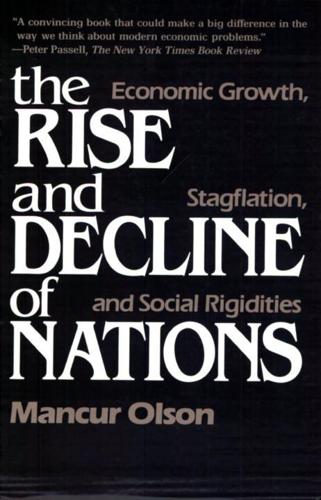
The Rise and Decline of Nations: Economic Growth, Stagflation, and Social Rigidities
by
Mancur Olson
If this type of unemployment were somehow prohibited, the national output and welfare would decline in the long run, since the worker in question presumably knows his interests and situation better than anyone else. On the other hand, if there is a social institution or public policy that inefficiently increases search costs or time spent in job queues, the extra searching is then required by the institution or policy, and this extra searching is no longer an investment that generates a social gain: any extra search unemployment due to such arrangements is defined to be involuntary. Suppose, arbitrarily, that only OX workers are employed; there is then strictly involuntary unemployment of XQ workers, as that many have a marginal revenue product in excess of the marginal cost of their time.
…
On the other hand, when an economy reaches the point where distributional coalitions are ubiquitous and the fixprice sector is large in relation to the flexprice sector, the theory offered here predicts that the macroeconomic situation will be different. An unexpected deflation or disinflation will then bring widespread losses and suffering from forced movement from the fixprice to the flexprice sector, from falling prices in the, flexprice sector, from unemployment of those who could not or would not move, from increases in queueing and searching costs, and at the same time substantial losses of real demand that further aggravate problems because the vector of relative prices diverges far from the predeflation vector for that society and even farther from the ideal vector. The economy that has a dense network of narrow special-interest organizations will be susceptible during periods of deflation or disinflation to depression or stagflation.
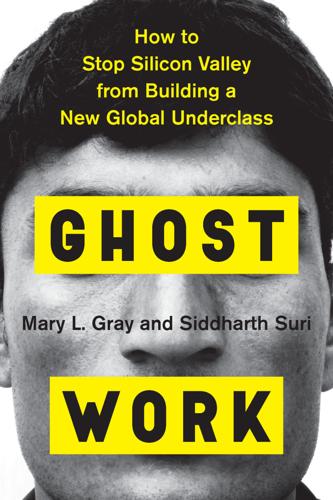
Ghost Work: How to Stop Silicon Valley From Building a New Global Underclass
by
Mary L. Gray
and
Siddharth Suri
Published 6 May 2019
Those doing ghost work who make the most money spend hours monitoring their dashboards and scrolling through pages upon pages of job postings. Joan, like so many others who are trying to make MTurk a core source of income, turns to free software tools and workers’ online forums to reduce some of the search costs that are an unpaid part of the job.18 They must be ready to snap up a well-paying or fast-and-easy task the second it pops on their screen, lest another worker click on the link and accept it first. “I’ve worked harder at this than I ever did at any office job,” she says. To enhance her speed, Joan arranged her web browser’s display of the MTurk dashboard to show 25 tasks or HITs at a time, and she uses keyboard shortcuts she created to flip through the pages quickly.
…
The mantra of “less talk, more work” through the magic of automation seems synonymous with “scaling up” and, ultimately, market dominance in delivering goods and services on demand. Platform designers assume that better-matching algorithms, atomization of work, and the complete elimination of hands-on management are key to reducing the search costs that come with labor markets, for both buyers and sellers. We argue that companies cannot eliminate workers’ desire to invest in their jobs as something beyond a payment transaction. No system can erase workers’ needs for connection, validation, recognition, and feedback without damaging both the worker and what they produce.

Fixed: Why Personal Finance is Broken and How to Make it Work for Everyone
by
John Y. Campbell
and
Tarun Ramadorai
Published 25 Jul 2025
Thaler and Tucker propose that financial institutions should be required to report these experiences in a machine-readable format so that third parties can aggregate the information and make it easier for consumers to compare lenders. Even in the absence of such aggregation, regulation can require each institution to summarize the experiences of its own customers. 20. For details of the reform, see Ali Hortaçsu and Chad Syverson, “Product differentiation, search costs, and competition in the mutual fund industry: A case study of S&P 500 index funds,” Quarterly Journal of Economics 119 (2004): 403–456. 21. Yannis Bakos, Florencia Marotta-Wurgler, and David R. Trossen, “Does anyone read the fine print? Consumer attention to standard-form contracts,” Journal of Legal Studies 43 (2014): 1–35. 22.
…
See Marco Di Maggio, Angela Ma, and Emily Williams, “In the red: Overdrafts, payday lending, and the underbanked” (unpublished paper), for evidence on the impact of overdraft fees on unwary customers. We discussed this paper in chapter 4. 59. Ali Hortaçsu and Chad Syverson, “Product differentiation, search costs, and competition in the mutual fund industry: A case study of S&P 500 index funds,” Quarterly Journal of Economics 119 (2004): 403–456. 60. Traditional financial advisers also use social media to recruit clients. A recent BlackRock publication targeted towards financial advisers highlights the extent to which surveyed investors rely on social media to pick a financial adviser and states that social media marketing is “business critical” for advisers.
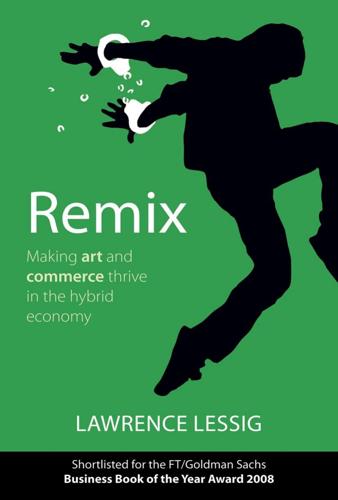
Remix: Making Art and Commerce Thrive in the Hybrid Economy
by
Lawrence Lessig
Published 2 Jan 2009
See Erik Brynjolfsson, Yu Jeffrey Hu, and Duncan Simester, “Goodbye Pareto Principle, Hello Long Tail: The Effect of Search Costs on the Concentration of Product Sales,” MIT Center for Digital Business Working Paper (2007); Paul L. Caron, “The Long Tail of Legal Scholarship,” Yale Law Journal 116 Pocket Part 38 (2006); Anita Elberse and Felix Oberholzer-Gee, “Superstars and Underdogs: An Examination of the Long Tail Phenomenon in Video Sales,” Harvard Business School No. 07-015 Working Paper Series; Indiana Resource Sharing Task Force, “Wagging the Long Tail: Sharing More of Less; Recommendations for Enhancing Resource Sharing in Indiana,” White Paper (2007); Anindya Ghose and Bin Gu, “Search Costs, Demand Structure and Long Tail in Electronic Markets: Theory and Evidence,” NET Institute Working Paper No. 06-19 (2006); Teruyasu Murakami, “The Long Tail and the Lofty Head of Video Content: The Possibilities of ‘Convergent Broadcasting,’ ” Nomura Research Institute, NRI Papers No. 113 (2007). 18.
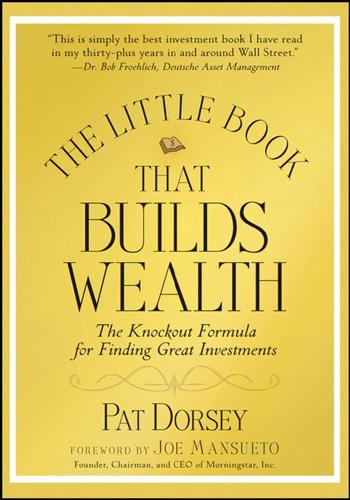
The Little Book That Builds Wealth: The Knockout Formula for Finding Great Investments
by
Pat Dorsey
Published 1 Mar 2008
Think about Bayer aspirin—it’s the same chemical compound as other aspirins, but Bayer can charge almost twice as much as generic aspirin. That’s a powerful brand. Of course, the ability to brand a true commodity product is relatively rare—most brands are attached to differentiated products like Coke, Oreo cookies, or Mercedes-Benz cars. In these cases, the brand is valuable because it reduces a customer’s search costs, but it doesn’t necessarily give the company pricing power. In other words, you know what a soft drink will taste like if it is labeled “Coke,” and you know that a car will be luxurious and durable because it is made by Daimler AG—but Cokes don’t cost more then Pepsis, and Mercedes-Benzes don’t cost more than BMWs.

The Wealth of Networks: How Social Production Transforms Markets and Freedom
by
Yochai Benkler
Published 14 May 2006
It also explains the cost of denying to anyone the right to use the symbol, now a signifier of general social meaning, in ways that do not confuse consumers in the traditional trademark sense, but provide cultural criticism of the message signified. 786 Ironically, the increase in the power of trademark owners to control uses of their trademark comes at a time when its functional importance as a mechanism for reducing search costs is declining. Traditional trademark's most important justification was that it reduced information collection costs and thereby facilitated welfare-enhancing trade. In the context of the Internet, this function is significantly less important. General search costs are lower. Individual items in commerce can provide vastly greater amounts of information about their contents and quality. Users can use machine processing to search and sift through this information and to compare views and reviews of specific items.
…
Users can use machine processing to search and sift through this information and to compare views and reviews of specific items. Trademark has become less, rather than more, functionally important as a mechanism for dealing with search costs. When we move in the next few years to individual-item digital marking, such as with RFID (radio frequency identification) tags, all the relevant information about contents, origin, and manufacture down to the level of the item, as opposed to the product line, will be readily available to consumers in real space, by scanning any given item, even if it is not otherwise marked at all. In this setting, where the information qualities of trademarks will significantly decline, the antidilution law nonetheless assures that owners can control the increasingly important cultural meaning of trademarks.

Competition Overdose: How Free Market Mythology Transformed Us From Citizen Kings to Market Servants
by
Maurice E. Stucke
and
Ariel Ezrachi
Published 14 May 2020
As IAC tells investors, one competitive risk is if “a meaningful number of users” return to offline dating, which includes everything from “social networks to bars, churches, nosey aunts, prying neighbors and concerned parents.”49 Thus, to remain successful, IAC’s leading online dating platforms must “continue to provide dating products that users find more efficient, effective, comfortable and convenient relative to traditional means of meeting people.”50 From a potential dater’s perspective, this sounds like heaven. FIRST, the dating platform reduces one’s search costs. Rather than go to spin classes, bars, and funerals (or dinner at your aunt’s) where we will meet a few potential matches, if that, we can, in a matter of hours, scan hundreds of potential candidates to find good prospects. SECOND, unlike the lemon markets, online dating increases transparency.
…
See also privatization of the prison system private school matriculation, 31–34, 296–98 privatization, 162–91 overview, xiii, 162–63, 190–91 and cream skimming, 169–70, 175, 183–87 cutting state expenditures with, 182–83 of Forensic Science Service in UK, 177–83 origin and purpose of, 189–90 private sector’s incentives vs. public sector’s goals, 166–69 providers as free riders, 185–86 of water supply in UK, 187–89 privatization of the prison system overview, 174 cream skimming, 169–70, 175, 183–87 incentive to keep prisoners for longer, 167–68, 173 inmates’ costs higher, services lower, 174, 175–76 invoking competition ideology, 163–64, 176–77 lobbyists, 173–76 provider reports on industry challenges, 166–67 sacrificing quality, 164, 166, 170–73 violence in prisons, 171, 172–73 product reviews on Amazon, 107 products purchased via Alexa, 106 ProPublica investigation of Amazon search results, 103–4 public good, 124–25, 241, 291 Public Goods game, 241–42 public policy study of privatization of prisons, 163–64 public school education, 6–9, 282 public sector goals vs. private sector incentives, 166–69 publishers of online apps, 206, 209–10, 214, 215 purpose-driven companies, 276–78 Putnam, Robert, 250–51 quality airlines’ cost reductions vs., 56–58, 61 belief that competition delivers quality at a low price, 47–48, 49 companies’ degradation of, 49, 58–59, 64–65 consumers’ belief that high price = quality, 59–60 consumers’ failure to notice quality degradation, 49, 62–65 diminishing profitability vs., 50–51, 58 of food, 51–54, 287–89 food apartheid in Europe, 51 hidden costs of good quality at a low price, 70 and privatization of prisons, 164, 166, 170–73 and privatization of UK forensic science, 178 of treatment of laborers, 54–56 quality of life, 247–49, 252 race to the bottom, 3–40 overview, 3–4, 38–40, 70, 123 competitors are harmed, 4–6, 9–12, 25–27, 264 cooperation, trust, and fairness vs., 242–44 government’s failure to regulate leads to financial crisis of 2008, 261–64 intended beneficiaries are harmed, 7–9, 9–12, 27–34, 264 See also college rankings; toxic competition race to the top, 3, 5, 6–7, 39, 40, 255 Ramirez, Edith, 151, 152 Randox Testing Services, United Kingdom, 181 rationality of competition, 34–38 Reagan, Ronald, 234 reductive competition ideology, 126–30, 146–47, 155–57, 176 regulations as anathema to exploiting human weakness, 93 Bank Holding Company Act, 126–30 California Consumer Privacy Act, 286–87 Children’s Online Privacy Protection Act, 194 competition as reason for deregulation of banks, 126–30 dismantling, since 1970s, 229 First Step Act, 169 Glass-Steagall Act, 127–28 as paternalistic vs. personal pride, 156 and policy makers, 143–45 politicians combating price drip legislation, 152–53 Truth in Hotel Advertising Act, 153–54 See also policy makers religion, 240, 250–51, 257–58 reprivatization, 189–90 resort fees as drip pricing, 154, 155–57 rewarded ads, 198 rip currents metaphor, 69–70 Roosevelt, Eleanor, 271 Roosevelt, Franklin D., 271 Russia and US social media, 216 Ryanair, 57–58 safety net, 269–72 salaries of college football coaches 135–137 Division I versus NESCAC 139 sale pricing, 82 Sandberg, Sheryl, 204–5 Sandel, Michael, 246 Sanders, Bernie, 175 Santos, Laurie, 34 Schiff, Adam, 159 Schmidt, Eric, 220 search costs, 109 self-interest, 243–44 self-regulation in food industry, United Kingdom, 273–74 seller response to choice overload, 101–8 shock treatment experiment, 279–82, 285 Singer, William “Rick,” 30–31 slave labor, 54–56 Smith, Adam, 3–4, 235, 236–37 Smith, Greg, 274–76 social, moral, and ethical values competition ideology does not excuse lack of, 271 competition undermining, xiii–xiv, 235–36, 237, 245–46, 274 complementing the competitive process, 252 enhancing the marketplace, 237 fairness, 144, 242–44, 252 farms with a social purpose, 290–91 as means to increase profits, 276–78 morality continuum, 257–58 morality through self-interest, 257 shaping behavior of others, 284–87 Smith on need for, 236–37 zero-sum competition vs., 249–51 social ideal, noble competition as, 259–60 socialism for the rich, 231 social outcome of markets, 124, 125 social values.
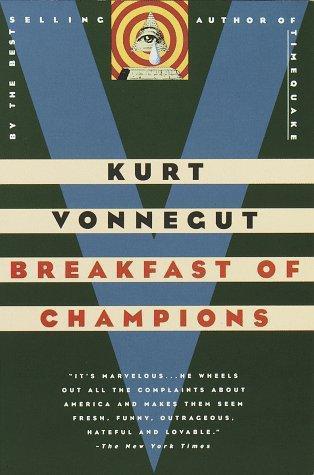
Breakfast of Champions
by
Kurt Vonnegut
Published 15 Mar 1999
He lay down to rest for a moment, and a drunk automobile worker mistook him for a kitchen match. He killed Kago by trying to strike him repeatedly on the underside of the bar. • • • Trout received only one fan letter before 1972. It was from an eccentric millionaire, who hired a private detective agency to discover who and where he was. Trout was so invisible that the search cost eighteen thousand dollars. The fan letter reached him in his basement in Cohoes. It was hand-written, and Trout concluded that the writer might be fourteen years old or so. The letter said that Plague on Wheels was the greatest novel in the English language, and that Trout should be President of the United States.

Willful: How We Choose What We Do
by
Richard Robb
Published 12 Nov 2019
See also purposeful choice rationalization, 15, 43–44, 55, 159–162, 178, 194–195 readiness potential, 161 real estate, 80 redistribution, 109 reference points, 168 regret, 127–128, 129 religious faith, 49–50, 116 remorse, 128–129 repeat dealing, 105 repentance, 128 reputation, 105–106, 134, 183 retirement, 19, 41, 185, 206 Ricardo, David: personal investments, 71, 205 theory of comparative advantage, 185 risk: above-market returns linked to, 70 aversion to, 17, 51, 96, 168, 199 diversification and, 64 in efficient market hypothesis, 69, 70 in human-life valuation, 139 low asset prices linked to, 96 modeling of, 69, 76 rivalry, 201 Rockefeller, John D., 211–212n12 Rotten Kid Theorem, 108–110, 125 Russell, Bertrand, 62 salience, 29 Sartre, Jean-Paul, 128–129 satisficing, 42–43 Saul of Tarsus, 63 Schopenhauer, Arthur, 5, 161, 209n5 Schwartz, Barry, 172 scientific knowledge, 61 scientific method, 49–50, 53 search costs, 9 Searle, John, 141–142 Securities and Exchange Commission (SEC), 16 selfish altruism, 104, 105–106, 109, 123, 125, 135 Seligman, Martin, 202 Sen, Amartya, 169 Shafir, Eldar, 174 Shane (film), 169 Sharpe, William, 65 short-term trading, 78 Siddhartha Gautama, 63 Simon, Herbert, 42 Singer, Peter, 110 Smith, Adam, 73, 82, 112, 171 Smith, Al, 211–212n12 Smith, Barbara Herrnstein, 47 social cost, 28–29, 133 social norms, 104, 106–108, 123 social relations, 28 rational choice explanations of, 104 Sodom and Gomorrah, 117–118 “soft selling,” 170 sovereign wealth funds, 74 speed limits, 138–140 spite, 126–127 spontaneity, 19–20, 202 altruistic, 28–29, 114–115, 119, 203 in spite, 127 stable preferences, 33, 115, 147, 207, 208 status symbols, 31 staying in the game, 179–181 stock-picking, 64–66 Strangers Drowning (MacFarquhar), 214n6 strategic competition, 125 structured credit, 15, 93 Strulovici, Bruno H., 217n1 Sturges, Preston, 7 subprime mortgages, 96–97 substitution effect, 187 survivor bias, 180 Taylor, Michael, 133 terrorism, 126 Thaler, Richard, 33–34 Thanet Offshore Wind, 83–90 Thus Spoke Zarathustra (Nietzsche), 43 tit-for-tat, in repeated games, 105 transaction costs, 64, 70, 78 transitivity of preferences, 158–159 Treatise of Human Nature (Hume), 209n5 “tricky profit,” 18–21 trolley problem, 133, 135–137 tulipmania, 212n1 Tversky, Amos, 168, 174 Twain, Mark, 60 ultimatum game, 107–108, 207 uncertainty, about future, 25, 153, 181–185 unique events, 70–71, 72–73, 74, 94 United Kingdom, 181 Energy Ministry of, 88 unemployment, 186 unemployment benefits, 188 university endowments, 74 University of Chicago, 8–9 unobserved care, 108, 112–113, 124, 125–126 utilitarianism, 135–136, 197–198 utility, 5–6, 18, 153–154, 196 vaccination, 58–59 values, 190–191 Van Gogh, Vincent, 79 Veblen, Thorstein, 167 veil of ignorance, 136 vengeance, 125, 126 venture capital, 27, 91–92, 100 Vestas Wind Systems, 84–88 video games, 180 Viner, Jacob, 219n2 Vogt, John, 117 wages, 154, 186, 187–188 waiting in line, 179 walk-a-thons, 178 “warm glow effect,” 114 wealth effect, 187 Wellington (Arthur Wellesley), Duke of, 71 Whitman, Walt, 50 The Will to Power (Nietzsche), 209n5 Williams, Bernard, 7 wind energy, 82–90 work-sports, 191–192 The World as Will and Idea (Schopenhauer), 209n5 Yavapai Indians, 133 Zarnowski, Frank, 191 Zeckhauser, Richard, 70–72 zero risk bias, 24
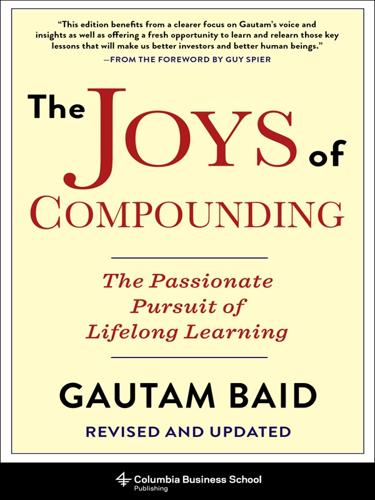
The Joys of Compounding: The Passionate Pursuit of Lifelong Learning, Revised and Updated
by
Gautam Baid
Published 1 Jun 2020
Think Budweiser, Tide, and Maggi. They lower search costs for consumers and offer psychological advantages. They make prospective customers switch from a system 2 type of slow, reasoned, reflective thinking to a system 1 type of fast, automatic, reflexive thinking through mental association and Pavlovian conditioning. Some brands (such as Rolex or Rolls-Royce) create positional value, while others (such as Nielsen Holdings or Gartner) confer legitimacy. Although positional and legitimacy brands are based on strong social consensus, the incumbent brands, which merely lower search costs through traditional shelf-space distribution advantages, are much more vulnerable to threats from disruptive online startups.

Algorithms in C++ Part 5: Graph Algorithms
by
Robert Sedgewick
Published 2 Jan 1992
The correctness of the algorithm depends on this fundamental fact. For example, Figure 18.18 illustrates a different search of the graph, starting from a different vertex, that (of course) finds the same bridges. Despite Property 18.6, when we examine different DFS trees for the same graph, we see that some search costs may depend not just on properties of the graph but also on properties of the DFS tree. For example, the amount of space needed for the stack to support the recursive calls is larger for the example in Figure 18.18 than for the example in Figure 18.17. As we did for regular connectivity in Program 18.4, wemaywish to use Program 18.7 to build a class for testing whether a graph is edge-connected or to count the number of edge-connected components.
…
A.end(); t = A.nxt()) traverseR(D, t); } We rarely use a full traversal of this kind, however, because we normally want to take advantage of the same economies that save space in a DAG to save time in traversing it (for example, by marking visited nodes in a normal DFS). The same idea applies to a search, where we make a recursive call for only one link incident on each vertex. In such an algorithm, the search cost will be the same for the DAG and the tree, but the DAG uses far less space. Because they provide a compact way to represent trees that have identical subtrees, we often use DAGs instead of trees when we represent computational abstractions. In the context of algorithm design, the distinction between the DAG representation and the tree representation of a program in execution is the essential distinction behind dynamic programming (see, for example, Figure 19.18 and Exercise 19.78).

Designing Search: UX Strategies for Ecommerce Success
by
Greg Nudelman
and
Pabini Gabriel-Petit
Published 8 May 2011
The exchange of goods and services is elevated into an experience that’s entertaining, educational, and inspiring. These vibrant markets offer stark contrast to the suburban shopping mall, an odious place I avoid like the plague. On a rare visit, as I physically drag my cadaver from rack to rack, store to store, anchor to anchor, I am painfully aware of the search costs of modern meatspace, which is why I do most of my shopping online. Of course, a similar spectrum exists in ecommerce, with many more bad stores than good. The difference is in the distance. On the Web, every shop is just a click away. Location isn’t what it used to be. And, since low cost often leads to low profit, smart sellers have learned that insanely great user experiences, especially in search and discovery, are the new keys to the kingdom of sustainable competitive advantage.
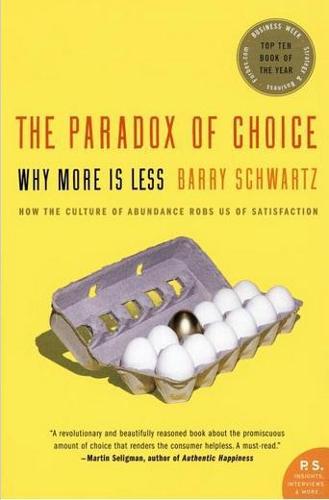
The Paradox of Choice: Why More Is Less
by
Barry Schwartz
Published 1 Jan 2004
Imagining all the ways in which we could be feeling worse might prevent us from taking for granted (adapting to) how good we actually feel. So, to be better prepared for, and less disappointed by adaptation: As you buy your new car, acknowledge that the thrill won’t be quite the same two months after you own it. Spend less time looking for the perfect thing (maximizing), so that you won’t have huge search costs to be “amortized” against the satisfaction you derive from what you actually choose. Remind yourself of how good things actually are instead of focusing on how they’re less good than they were at first. 9. Control Expectations OUR EVALUATION OF EXPERIENCE IS SUBSTANTIALLY INFLUENCED BY how it compares with our expectations.

The Plundered Planet: Why We Must--And How We Can--Manage Nature for Global Prosperity
by
Paul Collier
Published 10 May 2010
The fallacy in that analysis is that a substantial part of the risks of prospecting are not geological, but political: the government itself is the unknown that the company has to take into account, discounting what the search rights are worth by the risk that the government will renege on its commitments. Obviously, if the government itself finances the search costs it does not bear these risks and so it is more cost-effective. This does not imply that the government should itself run the prospecting process. The typical government of the bottom billion is drastically short of management capacity and prospecting is a highly skilled and specialized activity.
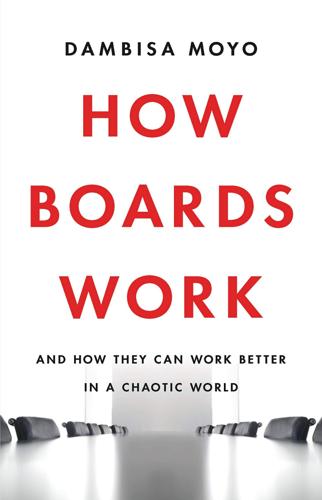
How Boards Work: And How They Can Work Better in a Chaotic World
by
Dambisa Moyo
Published 3 May 2021
Rather than hiring a board candidate because of a quota system, boards would be better off committing their time and budget toward identifying the women and minorities with the best potential to rise to a seat on the board. The cost of a search for the best and the brightest women and minority candidates may be high—particularly if the criteria for a board seat is narrow. However, with determination, boards can identify candidates with diverse backgrounds and experiences and reduce their board-search costs without creating suboptimal results. Quotas should only be used to help identify talented, competent, and experienced candidates who had previously gone unnoticed. Quotas that advocate for female or minority representation regardless of ability and potential contribution seem to me shortsighted and against the long-term interests of the business, society, and even the individual who ostensibly benefits from the arrangement.

How to Fix Copyright
by
William Patry
Published 3 Jan 2012
But as much attention as unauthorized uses on the Internet receive, the largest problems facing authors today are not unauthorized uses but the obstacles put in the way of buyers willing to pay for access to or copies of the work. These obstacles have caused a huge loss of income for composers, performers, and photographers (given the sheer volume of works they create). For 184 HOW TO FIX COPYRIGHT these creators, the costs of enforcing rights are substantial, and involve search costs for identifying infringers, enforcement costs for suing infringers, transaction costs for negotiating licenses with users, and collection costs for obtaining payment from licensees. Innovative services that wish to offer the public authorized, paid access, or copies have been impeded or shut down by licensing difficulties.
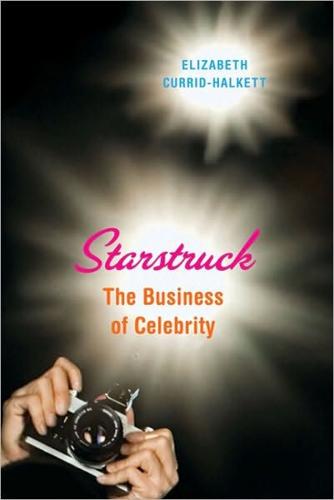
Starstruck: The Business of Celebrity
by
Currid
Published 9 Nov 2010
The reason we don’t go trolling iTunes for another blond pop star to listen to is that Britney Spears is already ranked number one on the chart. There is only a slim chance that the time we would spend looking for a similar type of musician would result in a significantly better musician. Superstars limit our search costs for what to read, watch, listen to, wear, eat, or hang on our walls. Superstars like Hirst and Koons are beneficiaries of the bandwagon effect: We tend to like what everyone else likes and we look for signals that tell us what is “good art” because we are not necessarily sure of our own judgment.26 Even if we love art, most of us don’t have art history degrees or regularly read exhibition reviews.

The Upside of Irrationality: The Unexpected Benefits of Defying Logic at Work and at Home
by
Dan Ariely
Published 31 May 2010
Additional readings Steven Bellman, Eric Johnson, Gerald Lohse and Naomi Mandel, “Designing Marketplaces of the Artificial with Consumers in Mind: Four Approaches to Understanding Consumer Behavior in Electronic Environments,” Journal of Interactive Marketing 20, no. 1 (2006): 21–33. Rebecca Hamilton and Debora Thompson, “Is There a Substitute for Direct Experience? Comparing Consumers’ Preferences after Direct and Indirect Product Experiences,” Journal of Consumer Research 34, no. 4 (2007): 546–555. John Lynch and Dan Ariely, “Wine Online: Search Costs Affect Competition on Price, Quality, and Distribution,” Marketing Science 19, no. 1 (2000): 83–103. Michael Norton, Joan DiMicco, Ron Caneel, and Dan Ariely, “AntiGroupWare and Second Messenger,” BT Technology Journal 22, no. 4 (2004): 83–88. Chapter 9: On Empathy and Emotion: Why We Respond to One Person Who Needs Help but Not to Many Based on Deborah Small and George Loewenstein, “The Devil You Know: The Effects of Identifiability on Punishment,” Journal of Behavioral Decision Making 18, no. 5 (2005): 311–318.

The New Harvest: Agricultural Innovation in Africa
by
Calestous Juma
Published 27 May 2017
The mobile penetration rate (number of subscriptions per 100 inhabitants) in Africa is expected to reach 69% by the end of 2014.21 Much of this growth in cell phone use—as much as 45% annually from 2002 through 2011—coincided with economic growth in the region. It is estimated that every 10% growth in mobile phones can raise up to 1.5% in GDP growth. There are five ways in which mobile phone access boosts microeconomic performance: reducing search costs and therefore improving overall market efficiency, improving productive efficiency of firms, creating new jobs in telecommunications-based industries, increasing social networking capacity, and allowing for mobile development projects to enter the market.22 Advances in Science, Technology, and Engineering 49 Mobile phones cut out the opportunity costs, replacing several hours of travel with a two-minute phone call and also allowing firms and producers to get up-to-date information on demand.
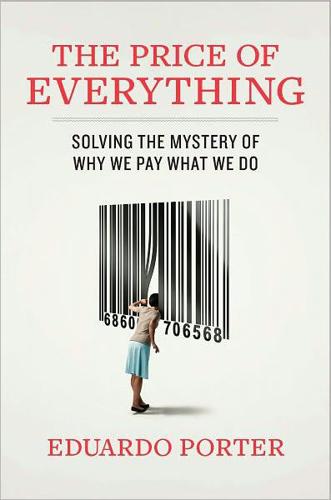
The Price of Everything: And the Hidden Logic of Value
by
Eduardo Porter
Published 4 Jan 2011
If competition is a consumer’s best friend, corporations’ favorite countervailing strategy is to keep consumers from figuring out where they can get the best available deal. Unlike the competitive utopia described in economic models, where consumers can effortlessly compare competing products to make their choices, the real world is plagued with what Nobel laureate George Stigler called search costs. It is difficult for consumers to find out what a given product costs in all the shops in town—let alone everything available on the Internet. It is even tougher if the goods are not identical. This is a shortcoming that businesses can exploit. For many companies, evading competition is a question of survival.

The New Science of Asset Allocation: Risk Management in a Multi-Asset World
by
Thomas Schneeweis
,
Garry B. Crowder
and
Hossein Kazemi
Published 8 Mar 2010
Closer up, he pointed out, the line is not nearly as clean or consistent and spaces appear. He walked up and put his face within inches of the graph. “And from here,” he pointed out, “this graph looks real ugly!” The same could be said for the process of investment and the market in which investment products exist. Moreover, the search costs of finding, monitoring, and assessing risk and return are extensive, continuous, and variable. Richard Feynman of physics fame (remember the O-ring and the Challenger story in which Feynman, instead of a lengthy discussion, simply put the rubber O-ring into a cold class of water, pulled it out, showed how inflexible it was when too cold, and thereby showed how cold temperature made it fail—end of story) has pointed out that what works at the “macro” may not work at the “micro” and that “things on a small scale behave nothing like things on a large scale.”
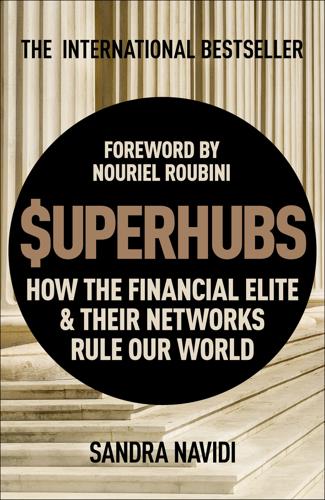
SUPERHUBS: How the Financial Elite and Their Networks Rule Our World
by
Sandra Navidi
Published 24 Jan 2017
The Influence of Personal Connections According to a Harvard Business School study titled Assess the Value of Your Networks, personal ties based on social, educational, employment, and gender backgrounds strongly influence the flow and quality of information. Often people distrust public information and prefer familiar and trusted sources. Particularly in recruiting and job searches, executives rely on each other’s opinion and discretion, which ensures better results and lower search costs.17 Another Harvard study called The Power of Alumni Networks examined how information flows affect stock prices by comparing the performance of investments into connected firms, where senior officials had common school ties, to nonconnected firms without such ties. Their results revealed that managers place larger and more successful bets on companies whose executives attended the same schools.

Radical Markets: Uprooting Capitalism and Democracy for a Just Society
by
Eric Posner
and
E. Weyl
Published 14 May 2018
Gordon, The Agency Costs of Agency Capitalism: Activist Investors and the Revaluation of Governance Rights, 113 Columbia Law Review 863 (2011). 39. We tread speculatively in this paragraph. The industry is complex, fluid, and poorly understood. 40. See Ali Hortaçsu & Chad Syverson, Product Differentiation, Search Costs, and Competition in the Mutual Fund Industry: A Case Study of S&P 500 Index Funds, 119 Quarterly Journal of Economics 403 (2004); John C. Coates IV & R. Glenn Hubbard, Competition in the Mutual Fund Industry: Evidence and Implications for Policy, 33 Journal of Corporate Law 151 (2007). 41. John Y.

Mapmatics: How We Navigate the World Through Numbers
by
Paulina Rowinska
Published 5 Jun 2024
These values depend on many factors, but the most important is the water depth – the deeper it is, the less likely the chance of success. Then, the search starts in the areas of the highest probability, moving on to the areas of lower probabilities, until the wreckage is found, or the probabilities become too low to justify the search costs. After each unsuccessful search phase, the probabilities are updated with the new information. The information might simply be that the wreckage hasn’t been found in the grid cell, but it also might include conclusions from, for example, finding the bodies of victims or pieces of the plane. Bayesian search may seem like an application of common sense rather than a groundbreaking idea, but describing our intuition in mathematical language can be surprisingly powerful.
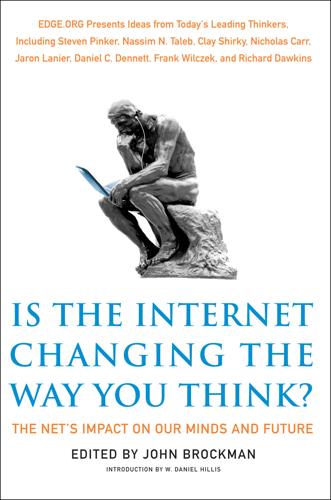
Is the Internet Changing the Way You Think?: The Net's Impact on Our Minds and Future
by
John Brockman
Published 18 Jan 2011
The bounty of mating opportunities in today’s computational sphere yields some tangible benefits. It allows people to secure better mating fits—access to that special someone who shares your unique interests in underground rock bands, obscure novelists, or unheard-of foreign movies. It can abbreviate search costs, eliminating the nonstarters without forcing you to slog through the cumbersome dating maze. The Internet affords practice (the stuttering and shy in person can be eloquently bold on the keyboard). Because of the surfeit of opportunity, the Internet may yield good bargains on the mating market, a maximization of one’s mate value, or access to the otherwise unattainable.

A Pelican Introduction Economics: A User's Guide
by
Ha-Joon Chang
Published 26 May 2014
This may be a good thing, if the country has high unemployment and it is unemployed unskilled workers who emigrate. However, those workers usually find it difficult to emigrate because immigrant-receiving countries want people with skills and because emigration costs money, which these workers don’t have (e.g., search costs, application fees, air tickets). So very often it is the ‘wrong’ people who emigrate – skilled workers. This is known as brain drain. Some of those skilled workers may learn even more skills in their destination countries and eventually come back home, teaching others new skills. This is known as brain gain, but the evidence for it is limited.

Superminds: The Surprising Power of People and Computers Thinking Together
by
Thomas W. Malone
Published 14 May 2018
If you have a broken laser pointer in your attic, it might have value to someone somewhere. But if the cost of finding that person is more than the laser pointer would be worth to him or her, then the broken laser pointer has no economic value. It’s worthless to you, and you might as well throw it away. But if a new technology (like the eBay platform) can reduce the search cost to almost zero, then suddenly the broken laser pointer has economic value. Now, imagine this same kind of thing happening not with the junk in your attic but with your time. If you are unemployed and would rather be working, then your time is wasted, just like a broken laser pointer in your attic would be.

Drunk: How We Sipped, Danced, and Stumbled Our Way to Civilization
by
Edward Slingerland
Published 31 May 2021
“The Kava Ceremonial as a Dream Structure.” In Mary Douglas (Ed.), Constructive Drinking: Perspectives on Drink from Anthropology (pp. 182–204). Cambridge: Cambridge University Press. Boudreau, K. J., T. Brady, I. Ganguli, P. Gaule, E. Guinan, A. Hollenberg, and K. R. Lakhani. (2017). “A field experiment on search costs and the formation of scientific collaborations.” Review of Economics and Statistics, 99(4), 565–576. Bourguignon, Erika. (1973). Religion, Altered States of Consciousness, and Social Change. Columbus: Ohio State University Press. Boyd, Robert, Peter Richerson, and Joseph Henrich. (2011). “The cultural niche: Why social learning is essential for human adaptation.”
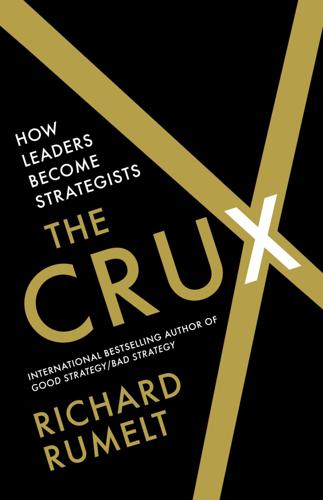
The Crux
by
Richard Rumelt
Published 27 Apr 2022
One writer exclaimed that “Searching for ‘mermaid’ in the wedding gown category of Etsy returns 1,299 results, ranging from a $6,882 gown made by Project Runway’s Leanne Marshall to one purportedly handmade lace dress going for $65.”6 Nevertheless in 2020, Etsy was valued at $6 billion on earnings of $76 million. It shows growth in merchandise revenue of more than 20 percent per year. Its revenue comes from a 5 percent charge on sales, a 3 percent charge for payment processing, and a 20-cent listing fee for four months. WHEN WE THINK about edge or advantage, we tend to look at search costs as well as stickiness, or switching costs. That is, how well does the platform meet the buyer’s need to easily search for a desired category or item? And how easy is it for a buyer or seller to switch to a different platform? With Uber, search is fast and easy, though one can get caught with fares three times normal if there is a rush.

The Measure of Progress: Counting What Really Matters
by
Diane Coyle
Published 15 Apr 2025
Traditional markets co-ordinate using location, as in an old-fashioned marketplace, or time, as in financial market auctions. Platforms achieve improved co-ordination using technology. Participants do not need to be co-located, and while individual transactions happen very quickly, they do not all need to occur at the same time. There is thus a dramatic reduction in search costs and improved matching. But the pure efficiency gains that are possible in principle can be largely captured by the platform if t here are neither incentives nor enforcement mechanisms to share them with t hose on both sides of the market. This is one reason why monopsony power in the labour market (as well as monopoly power in product markets) has become a hot issue in competition policy again, a fter many decades.

Artificial Intelligence: A Modern Approach
by
Stuart Russell
and
Peter Norvig
Published 14 Jul 2019
Korf and Reid (1998) argue that a better way to characterize the effect of A* pruning with a given heuristic h is that it reduces the effective depth by a constant kh compared to the true depth. This means that the total search cost is O(bd–kh) compared to O(bd) for an uninformed search. Their experiments on Rubik’s Cube and n-puzzle problems show that this formula gives accurate predictions for total search cost for sampled problem instances across a wide range of solution lengths—at least for solution lengths larger than kh. For Figure 3.26 we generated random 8-puzzle problems and solved them with an uninformed breadth-first search and with A* search using both h1 and h2, reporting the average number of nodes generated and the corresponding effective branching factor for each search strategy and for each solution length.
…
Column 2, 3. Column 3, 1. Another square labeled Goal state has three rows and three columns. Row 1: Column 1, blank. Column 2, 1. Column 3, 2. Row 2: Column 1, 3. Column 2, 4. Column 3, Asterisk. Row 3: Column 1, Asterisk. Column 2, Asterisk. Column 3, Asterisk. Figure 3.26 Comparison of the search costs and effective branching factors for 8-puzzle problems using breadth-first search, A* with h1 (misplaced tiles), and A* with h2 (Manhattan distance). Data are averaged over 100 puzzles for each solution length d from 6 to 28. One might ask whether h2 is always better than h1. The answer is “Essentially, yes.”
…
The increased search time from iterative deepening can be more than made up from better move ordering. The best moves are known as killer moves, and to try them first is called the killer move heuristic. In Section 3.3.3, we noted that redundant paths to repeated states can cause an exponential increase in search cost, and that keeping a table of previously reached states can address this problem. In game tree search, repeated states can occur because of transpositions—different permutations of the move sequence that end up in the same position, and the problem can be addressed with a transposition table that caches the heuristic value of states.
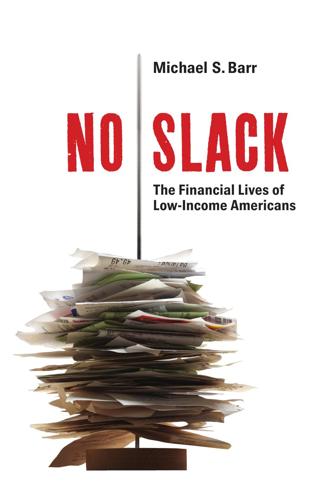
No Slack: The Financial Lives of Low-Income Americans
by
Michael S. Barr
Published 20 Mar 2012
The top spenders, however, take up a disproportionate share of overall spending. We also show that although annual outlays on financial services are low, on average, some LMI households incur significant nonpecuniary costs to obtain and use banking services. These households often pay bills in person and incur large search costs to avoid the most expensive options. When asked what features of financial services would motivate them to change behavior, they cite convenience and speed before costs. Moreover, banked households use a wide range of alternative financial services, and most of the outlays of the median banked household are for alternative financial services.
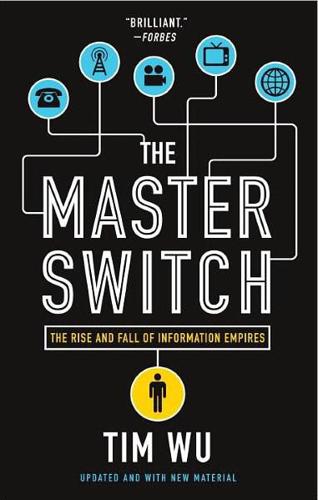
The Master Switch: The Rise and Fall of Information Empires
by
Tim Wu
Published 2 Nov 2010
We might understand perfectly well how block booking and vertical integration reduced the costs of industrial production, while understanding nothing of what these innovations meant for film as a form of expression. Interestingly, when it comes to products like film, such inefficiencies as “higher search costs” might be a good thing, if the result is greater variety in what gets seen and heard. As the film critic Pauline Kael wrote in 1980, “there are certain kinds of business in which the public interest is more of a factor than it is in the manufacture of neckties.”39 THE TURNING POINT Few realize that 1926, before the triumph of the “talkies,” was the turning point for American film.
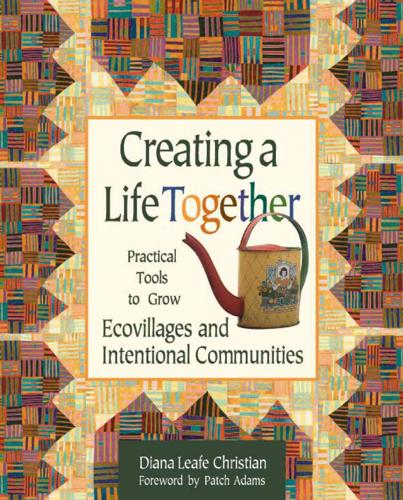
Creating a Life Together: Practical Tools to Grow Ecovillages and Intentional Communities
by
Diana Leafe Christian
Published 1 Jan 2003
Group members each get pre-qualified for mortgages on their individual housing units. The group chooses a likely property, puts a 60- to 120-day option on it, and arranges a feasibility study to determine whether this parcel of land will work for them. They pay for legal fees, promotional expenses, land-search costs, and the option fee. In the pre-construction phase, they conduct the feasibility study, pay for any tests, surveys, permits, and fees, and get any necessary zoning changes. If they decide to buy the property, they usually pay a certain amount down and arrange with the seller to pay the balance when they secure a construction loan, which can be up to a year later.

People, Power, and Profits: Progressive Capitalism for an Age of Discontent
by
Joseph E. Stiglitz
Published 22 Apr 2019
“Pursuing the American Dream,” Pew Mobility Project. CHAPTER 3: EXPLOITATION AND MARKET POWER 1.There has also been an increase in our understandings of the limitations of the competitive equilibrium model. It is not robust—slight changes in assumptions (the presence of small fixed sunk costs, or small search costs or small information costs combined with small amounts of information imperfections) lead to large changes in results, e.g., the persistence of large amounts of market power. Even small market power in multiple industries can add up to having large effects. Information economics, game theory, and behavioral economics have all had profound effects on how we think about the economy.

Convergence Culture: Where Old and New Media Collide
by
Henry Jenkins
Published 31 Jul 2006
Skenovano pro studijni ücely 76 Buying into American Idol advice of an older brother, an uncle, a father, or perhaps a neighbor, today opportunities for such insights are relatively scarce.To the extent that information about military service shapes the career plans of young Americans today, these decisions are influenced by movies, magazines, books, and advertising Consequently, it is not surprising that young Americans with little or no contact with Soldiers are less likely to include Soldiering as a potential career. To counter this situation, the game's originator reasoned that the Army would reduce search costs by framing information about Soldiering within the entertaining and immersive context of a game A game would provide virtual experiences and insights into the development, organization, and employment of Soldiers in America's Army. 1 The America's Army project has the ambitious vision of developing itself as a general popular culture brand for all kinds of media, hoping to extend outward to include comic books, television series, youth organizations, perhaps even feature films, though the game will continue to be the hub for this brand identity.
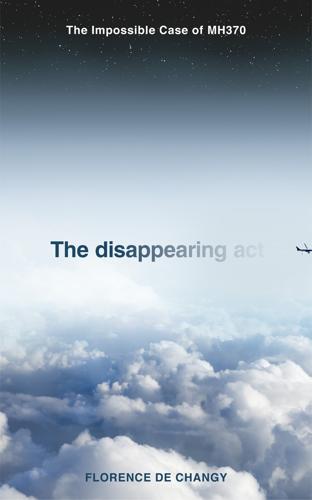
The Disappearing Act
by
Florence de Changy
Published 24 Dec 2020
If public opinion does not wake up, and if no one who knows has the courage to say what really happened on the night of 7 to 8 March 2014, this is how I imagine the event will be described in the civil aviation history books of the future: Flight MH370: Kuala Lumpur–Beijing, 8 March 2014 Description: Deliberate act to hijack an aircraft and change its course towards the southern Indian Ocean Figures: 239 civilians, 1 Boeing 777-200ER and 10 tonnes of cargo declared missing Motive: Unknown Precise circumstances: Unknown Crash site: Unknown Person(s) responsible: Unknown Claims of responsibility: None Witnesses: None Proof to date: None Debris: None for 16 months. Right flaperon found in Réunion in July 2015. Two other parts later found in Mauritius and Pemba Island (Tanzania) Search for proof: 100,000 square kilometres of seabed in the southern Indian Ocean Search cost: A$200 million Search results: None Comment(s): Generally considered the ‘greatest mystery in the history of civil aviation’ 1 In late 2017, Imran, who became a senator the following year, urged his government to release the Royal Malaysian Air Force radar videos. 2 Quoted in the South China Morning Post, 10 March 2014. 3 The Haiphong LES was one of 29 similar ground stations that Inmarsat ran around the world.
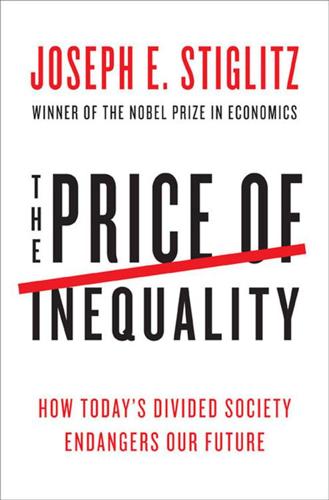
The Price of Inequality: How Today's Divided Society Endangers Our Future
by
Joseph E. Stiglitz
Published 10 Jun 2012
Event, 24% More Than Planned,” Bloomberg, April 28, 2011, available at http://www.bloomberg.com/news/2011-04-28/mcdonald-s-hires-62-000-during-national-event-24-more-than-planned.html (accessed March 5, 2012). 39. Indeed, there is an argument that unemployment insurance might actually enhance the efficiency of the labor search market, since those who were least desirous of a job and least likely to get a job would be the first to drop out. In doing so, search costs were lowered for others, and those who did get a job were more likely to be better matched. I am indebted to George Akerlof for discussions on this point. 40. Growth of real GDP (percent change from preceding year) for 2010: United States (2.9), Sweden (5.3), Germany (3.5). Employment growth (percent change from preceding year) for 2010: United States (–0.6), Sweden (1.0), Germany (0.5).

Superintelligence: Paths, Dangers, Strategies
by
Nick Bostrom
Published 3 Jun 2014
Social pressures may encourage AIs to expose their source code, and to modify themselves to render themselves transparent—especially if being transparent is a precondition to being trusted and thus to being given the opportunity to partake in beneficial transactions. Cf. Hall (2007). 41. Some other issues that seem relatively minor, especially in cases where the stakes are enormous (as they are for the key global coordination failures), include the search cost of finding policies that could be of mutual interest, and the possibility that some agents might have a basic preference for “autonomy” in a form that would be reduced by entering into comprehensive global treaties that have monitoring and enforcement mechanisms attached. 42. An AI might perhaps achieve this by modifying itself appropriately and then giving observers read-only access to its source code.

The Singularity Is Nearer: When We Merge with AI
by
Ray Kurzweil
Published 25 Jun 2024
As a result, the close relationship between marginal cost, price, and consumers’ willingness to pay has been weakened. In the case of services whose marginal cost is low enough that they can be free to consumers altogether, that relationship breaks down completely. Once Google has designed its search algorithms and built its server farms, providing a user with one additional search costs almost nothing. It doesn’t cost Facebook any more money to connect you to one thousand friends than to connect you to only one hundred. So they give the public free access and cover their marginal costs with ads. Even though such services are free to consumers, we can approximate people’s willingness to pay for them (also known as consumer surplus) by looking at their choices.[98] For example, if you could earn $20 by mowing a neighbor’s lawn but choose to spend that time on TikTok instead, we can say that TikTok is giving you at least $20 of value.

Never Let a Serious Crisis Go to Waste: How Neoliberalism Survived the Financial Meltdown
by
Philip Mirowski
Published 24 Jun 2013
See this meme repeated by Stephen Schwartzman, CEO of Blackstone Group, in Lofgren, “Revolt of the Rich”; and also Weigel, “Republicans for Tax Hikes,” for how this entire echo chamber meme was concocted by one of the outer layers of the neoliberal Russian doll, the so-called Tax Foundation. 73 Rivlin, Broke, USA, pp. 27, 30. 74 Rivlin, Broke, USA. 75 Diamond, “The Return of Debtor’s Prisons.” 76 Konings, The Great Credit Crash. 77 Ibid., pp. 120–21. 78 Ehrenreich, “Turning Poverty into an American Crime.” 79 See www.indybay.org/newsitems/2010/02/05/18637084.php. 80 Knight, “Gary Lures Hollywood with a Bounty of Decay.” 81 Lieber, “Last Plea on Student Loans.” 82 Hacker and Dreifus, “The Debt Crisis at American Colleges.” 83 One must acknowledge that there have been various “epicycles” proposed to the neoclassical model to supposedly cover these phenomena, from “search costs” to ‘“asymmetric information” to “lemon models” and beyond; but two observations render them moot. First, they really are epicycles, and have never been incorporated into the core microeconomic model. One reason may be that there is no consensus technique to correctly incorporate “information” into the model of the economic agent (Mirowski, “Why There Is (as Yet) No Such Thing as an Economics of Knowledge”).
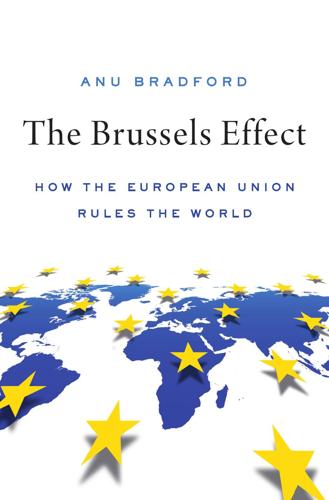
The Brussels Effect: How the European Union Rules the World
by
Anu Bradford
Published 14 Sep 2020
For example, companies like Pepsi save millions of dollars each year by having common global branding.210 A uniform brand name can also lead to cost savings in distribution, inventory, and packaging.211 Trust in a brand and its uniform quality allows the consumer to forgo uncertainty and reduce search costs associated with product choices in a new market. For example, a frequent business traveler may stay loyal to the same hotel chain across the world due to familiarity with the brand. This is one of the reasons Hilton rooms look similar irrespective of the destination, and the services offered are largely standardized across markets.212 This cultivates a sense of home for travelers as the room and amenities remain consistent across destinations.

Expected Returns: An Investor's Guide to Harvesting Market Rewards
by
Antti Ilmanen
Published 4 Apr 2011
Within major asset classes, small-cap stocks are less liquid than large-caps, emerging markets are less liquid than developed markets, and corporate or securitized bonds are less liquid than government bonds. Most alternative assets (private equity, direct real estate, other real assets, and many hedge funds) are much less liquid than traditional asset classes. Fundamentally, market liquidity reflects the ease of finding counterparties to trade with. Higher search costs for counterparties—whether those naturally needing to take the opposite position, or financial intermediaries or arbitrage capital looking for attractive opportunities—raise the cost of trading. Liquidity differences can often be explained by varying degrees of information asymmetry—a key determinant of illiquidity that can in extreme situations cause market breakdowns.
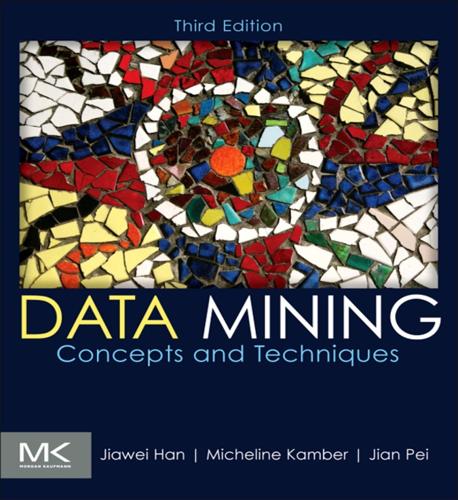
Data Mining: Concepts and Techniques: Concepts and Techniques
by
Jiawei Han
,
Micheline Kamber
and
Jian Pei
Published 21 Jun 2011
The FP-growth method transforms the problem of finding long frequent patterns into searching for shorter ones in much smaller conditional databases recursively and then concatenating the suffix. It uses the least frequent items as a suffix, offering good selectivity. The method substantially reduces the search costs. When the database is large, it is sometimes unrealistic to construct a main memory-based FP-tree. An interesting alternative is to first partition the database into a set of projected databases, and then construct an FP-tree and mine it in each projected database. This process can be recursively applied to any projected database if its FP-tree still cannot fit in main memory.

The Irrational Bundle
by
Dan Ariely
Published 3 Apr 2013
Additional readings Steven Bellman, Eric Johnson, Gerald Lohse and Naomi Mandel, “Designing Marketplaces of the Artificial with Consumers in Mind: Four Approaches to Understanding Consumer Behavior in Electronic Environments,” Journal of Interactive Marketing 20, no. 1 (2006): 21–33. Rebecca Hamilton and Debora Thompson, “Is There a Substitute for Direct Experience? Comparing Consumers’ Preferences after Direct and Indirect Product Experiences,” Journal of Consumer Research 34, no. 4 (2007): 546–555. John Lynch and Dan Ariely, “Wine Online: Search Costs Affect Competition on Price, Quality, and Distribution,” Marketing Science 19, no. 1 (2000): 83–103. Michael Norton, Joan DiMicco, Ron Caneel, and Dan Ariely, “AntiGroupWare and Second Messenger,” BT Technology Journal 22, no. 4 (2004): 83–88. Chapter 9: On Empathy and Emotion: Why We Respond to One Person Who Needs Help but Not to Many Based on Deborah Small and George Loewenstein, “The Devil You Know: The Effects of Identifiability on Punishment,” Journal of Behavioral Decision Making 18, no. 5 (2005): 311–318.